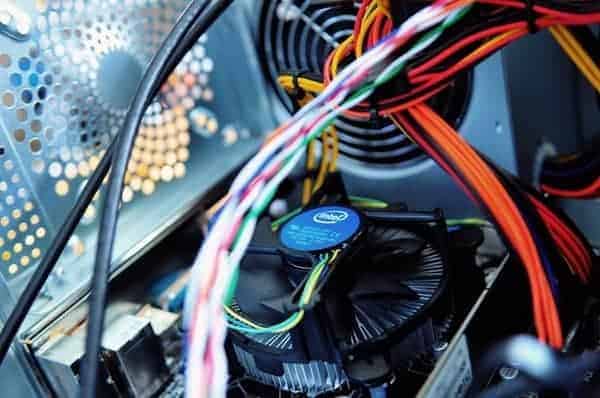Data loss is a crisis for most businesses, as all of their essential records, invoices and pieces of customer information become inaccessible. The result? Often substantial financial losses and, in the case of many businesses, a complete business failure. But what exactly causes this data to be lost forever? And, perhaps more importantly, how can these causes be prevented? Below you’ll find the five most common reasons, as well as some helpful tips on stopping them from happening in the first place…

It is essential to mention this first, though: however hard you prepare and however many procedures you put in place, it is not always possible to prevent data loss from occurring. This is why all companies should have a contingency plan, which includes some provision for disaster recovery. Losing data will never be a pleasant experience, but with a plan in place, the impact can at least be minimized.
Human Error
Forget hackers, or anything else, as the number one cause of data loss is human error. However attentive your staff might be, there’s always the chance that they could accidentally click the wrong button or even damage important hardware. The majority of times, this will not lead to significant damage – perhaps a scratch here or a deleted file there – however, sometimes that misclick or stumble can prove to be extremely serious.
There’s a straightforward way to minimize the chance of human error affecting a business though, and it’s training. Show your staff what to click and what not to click, make them aware of how different critical pieces of hardware are, and generally improve their knowledge of the IT system. Physical barriers can also help, such as ensuring that servers are securely locked away, and that critical equipment isn’t left in areas of high footfall.
Hardware Malfunctions
Hardware malfunctions join human error as the top cause of data loss. This could be down to a sudden catastrophic failure, with the computer unable to recognize the hard drive; it could be a controller failure; or it could be down to numerous other things. The primary thing business owners will be concerned about is the result, which can lead to large amounts of data becoming inaccessible.
The leading cause of hardware malfunctions is a power surge, however, these can easily be protected against simply by using a UPS (Uninterrupted Power Supply). It is also recommended that IT equipment is kept in a clean, dust-free room. Finally, any trauma should be avoided, which often occurs due to human error.
Software Issues
Software is, unfortunately, one of the most unreliable aspects of any IT system. Just one change to the way in which it works can cause it not to work correctly, and this can result in an inability to open files of a particular type. A good software expert should be able to resolve the problem, though, and restore the software back to its former state.
Software corruption is often caused due to interference from other pieces of software, such as diagnostic tools. Therefore, you should be incredibly selective regarding the software installed on your computer system. Saving work regularly also means that it won’t be lost should the software fail on a one-off basis.
Viruses
Viruses are not as common as people think, yet they are still a genuine threat. Moreover, they can be incredibly destructive, often working their way through a computer system, destroying everything in their path. Other viruses, however, are more targeted, affecting just one aspect of a system. All will cause damage at one level or another though, as this is the nature of viruses. They are nearly always contracted by downloading something, usually by a staff member with no idea about how much damage they could cause.
Staff training is essential when it comes to preventing viruses, as it should hammer home the point about how dangerous viruses can be. The best protection is a great virus-checking software, though, which can be relatively cheap to buy. Just a tiny outlay could save you some serious amounts of money in the future.
Natural Disasters
The phrase “natural disasters” throws up images of volcanoes and tsunamis. While these would undoubtedly be devastating, the most common natural disasters are not so extravagant, though, and include floods and fires. A natural disaster can tear through IT infrastructure and render it completely useless, and there is no way to prevent it from happening.
There is something that can be done to prevent data loss, though. The solution is storing data at a remote location and also backing up non-sensitive data on the Cloud. That way, data can be accessed even when all hardware has been destroyed.
So, there are five ways in which data loss can happen – along with solutions to minimize any damage that they might cause. It always pays to have an expert on hand, though, which is why you should chat with a disaster recovery expert before implementing any of the measures mentioned in the article above.





